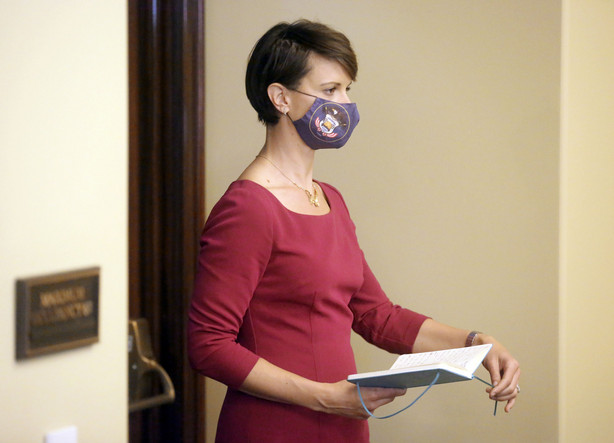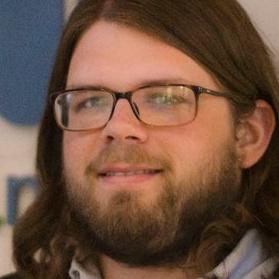SALT LAKE CITY — Utah’s number of COVID-19 cases has increased by 1,501 on Thursday — a new record number of cases in a single day.
Five deaths were also reported Thursday, bringing the state above 500 total COVID-19 deaths since the pandemic began, according to the Utah Department of Health.
As Utah continues struggling to contain a spike in cases of the disease, Gov. Gary Herbert encouraged Utahns to stay the course.
“These seven months have felt like seven years for a lot of us,” Herbert said. “We’re going to win this together.”
He repeated the message Utahns have heard time and time again over the course of those seven months: keep wearing masks, keep socially distancing, and keep doing your part to stop the spread.
Heath officials said hospitals and healthcare systems are becoming strained under COVID-19 caseloads as current hospitalizations continue rising. Thursday, Utah had 237 people hospitalized for COVID-19 — another record for current hospitalizations in any given day.
Herbert said there are beds available at Utah hospitals, but there is a lack of healthcare personnel available to attend to COVID-19 patients as they continue being admitted to hospitals. Frontline healthcare workers are tired, and some aren’t able to come into work due to that fatigue, he said.
Dr. Emily Spivak, an associate professor of medicine in the Division of Infectious Diseases at University of Utah Health, said that the U.’s intensive care unit is 95% full as of Thursday, and Utah needs to slow the case rates soon so that hospitals aren’t overwhelmed.
“We must come together as a state and a community if this is to ever end,” Spivak said.
,
Utah Gov. Gary Herbert provided a COVID-19 pandemic update at a news conference Thursday morning. Utah Department of Health state epidemiologist Dr. Angela Dunn, University of Utah Health associate professor of medicine Dr. Emily Spivak and Utah state elections director Justin Lee also spoke at the news conference.
Watch the replay of the event below.
Hospitals are stretched
The Utah Department of Health may soon need to dip into its crisis standards of care procedures if case rates don’t slow soon, state epidemiologist Dr. Angela Dunn said.
Those standards involve pandemic contingency plans like redistributing patients to other areas or healthcare systems that aren’t as full, or converting existing hospital beds into ICU units, Dunn said. The crisis standards of care also outline things like setting up a triage hospital center in places such as the Mountain America Expo Center in Sandy if hospitals can’t take any more patients.
“There are plans in place if we need to get there, and we are trending in that direction, unfortunately,” Dunn said. “So what we really need is to actually decrease our case counts now, and urgently, so that we don’t have to go into that crisis standards of care mode where, ultimately,patients might not get the type of care they actually need for their disease.”

Under the crisis of care guidelines, healthcare providers could be forced to prioritize care for some patients as resources become more and more stretched.
But even if the state shifts to the crisis of care model to expand the number of hospital beds, the availability of healthcare workers is still a limiting factor, Dunn said. Human resources aren’t as easy to come by as it is to increase the number of ICU beds.
Spivak added that she has heard some “heartbreaking” personal stories from ICU nurses during meetings.
“They feel very overwhelmed,” an emotional Spivak said. “We feel supported, we have great leadership, but people are really tired.”

Despite the strain, healthcare workers are learning more about COVID-19 as the pandemic goes on, and treatments for the disease are becoming more effective, Spivak added.
She urged people to continue wearing masks to prevent further spread of COVID-19 so hospitals won’t be stressed any further. She didn’t mince words, saying that if people continue choosing not to wear masks, state leaders will continue having the same conversations over and over.
Spivak said if people continue ignoring the science that indicates masks are effective in stopping the spread, Utah will be forced to continue its lockdown state indefinitely, and healthcare systems will see their resources stretched, affecting their ability to provide people with the best care.
“I honestly don’t know how (masks) became a debate,” Spivak said. “It is a fact: They work and they are safe. … Don’t overthink it, just wear a mask.”
The state now estimates there are 21,227 active cases of the disease — the highest estimate of the pandemic so far. The rolling seven-day average number of positive cases per day is now at a record-high 1,114, according to the health department. The positive test rate per day for that time period is now 13.7%.
The new numbers indicate a 1.9% increase in positive cases since Wednesday. Of the 892,022 people tested for COVID-19 in Utah so far, 9.2% have tested positive for COVID-19. The health department reported an increase of 10,582 tests conducted since Wednesday.
Utah’s current surge in COVID-19 cases, which has been going on for about a month, initially was centered around Utah County. At the beginning of the surge, Utah County was accounting for about 40% of the state’s new cases, despite making up only about 20% of Utah’s overall population.
For the past week, Utah County accounts for about 30% of Utah’s new overall cases, Dunn said.
“This is an example of the success we can have when we come together as a community with a renewed focus,” she said.
Of the 18 smaller areas in Utah County, only one of them is currently seeing increased cases, Dunn said. The other 17 areas have seen declines in new cases over the past several days, she added.
Everyone in Utah County, from government leaders to business owners to citizens, made the decision to change their behavior, and it’s producing positive results, Dunn said.
“They reignited their commitment to stop unnecessary illness and death and this has worked,” she said. “Let’s all use this as an example for statewide action moving forward so that we can get control of the spread of COVID-19 here in Utah.”

Despite the promising signs in Utah County, the state isn’t out of the woods yet. While, initially, the surge was mostly among the 15-24 age group, there are now increases among all adult age groups in Utah, Dunn said.
Of the record 237 COVID-19 patients currently hospitalized in Utah, 86 are in intensive care unit beds across the state. About 73% of all ICU beds in the state are filled as of Thursday, while about 55% of non-ICU beds are filled.
The five deaths reported Thursday include:
- A Davis County man who was over the age of 85 and was not hospitalized when he died
- A Salt Lake County woman who was over the age of 85 and was a resident of a long-term care facility
- A Salt Lake County man who was between the ages of 45 and 64 and was not hospitalized when he died
- A Salt Lake County man who was between the ages of 65 and 84 and was a resident of a long-term care facility
- A Washington County man who was between the ages of 65 and 84 and was a resident of a long-term care facility
Thursday’s totals give Utah 81,947 total confirmed cases, with 4,167 total hospitalizations and 501 total deaths from the disease. A total of 60,220 Utah COVID-19 cases are now considered recovered, state data shows.
Spivak and Dunn both said it’s not enough for people to wear masks only when they’re at the grocery store or going to work. Utahns should wear masks any time they are outside their homes, even if you’re having a small outdoor gathering with family or friends who don’t live in your immediate household.

As the Halloween holiday approaches, Herbert urged people to think about if what they are doing is safe. Masks are the norm for Halloween even outside of a pandemic, but the governor said as people gather outdoors for the holiday, they should still make sure they’re taking precautions.
Utahns are being tested like they’ve never been before, but it’s important to double down and keep doing your part to stop the spread of COVID-19, Herbert said.
“I think we’re all tired,” Herbert said. “Let’s be part of the solution, not part of the problem.”
×
